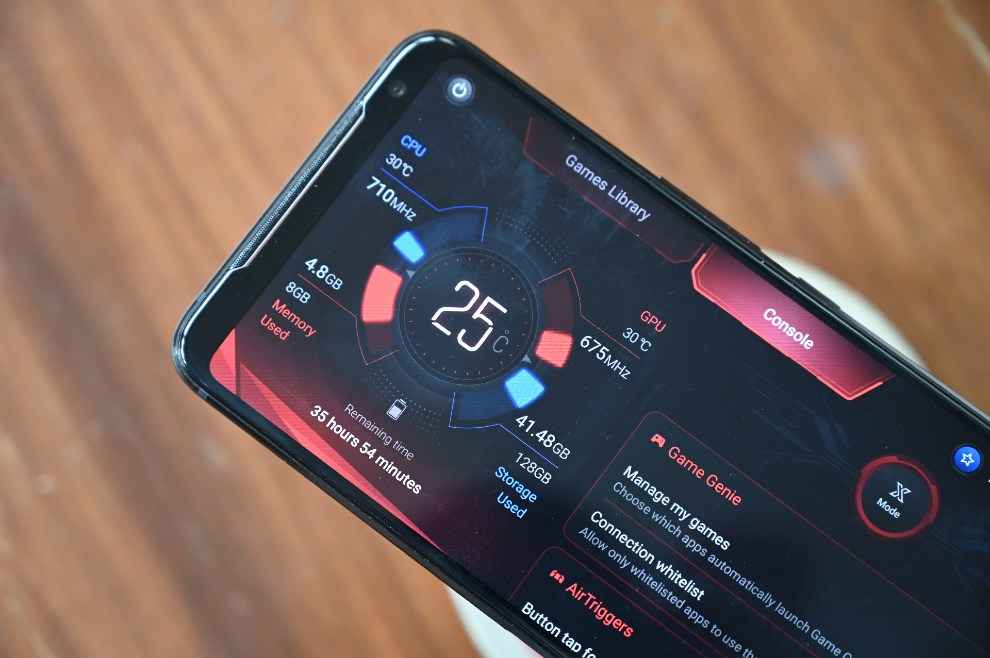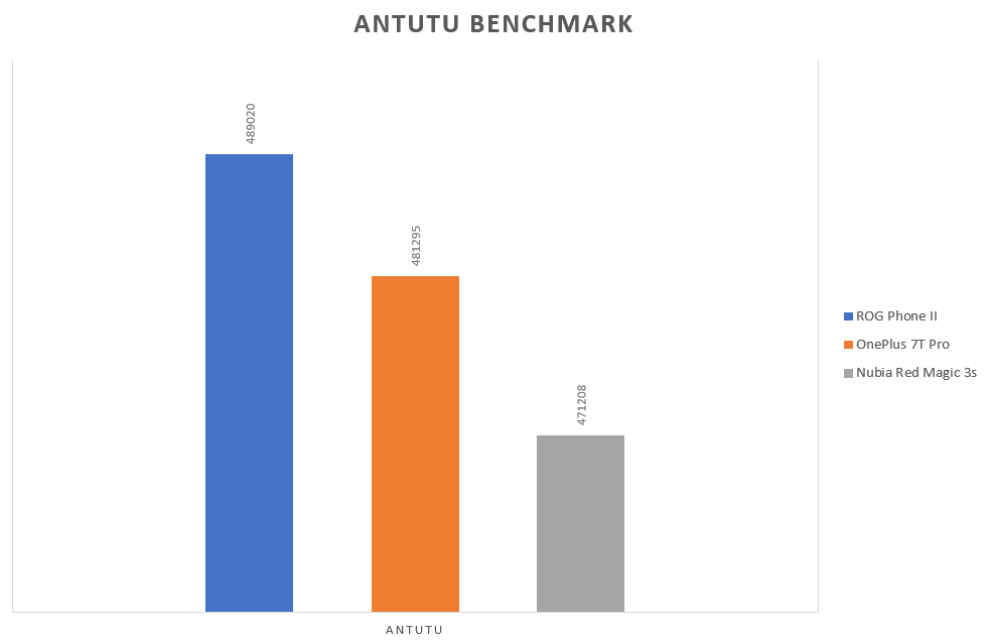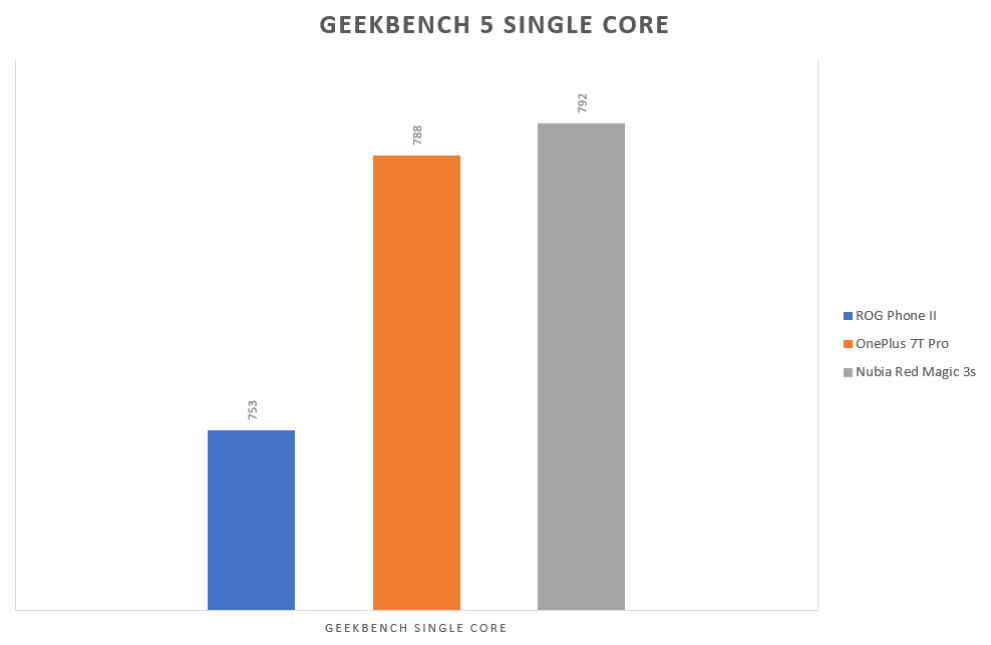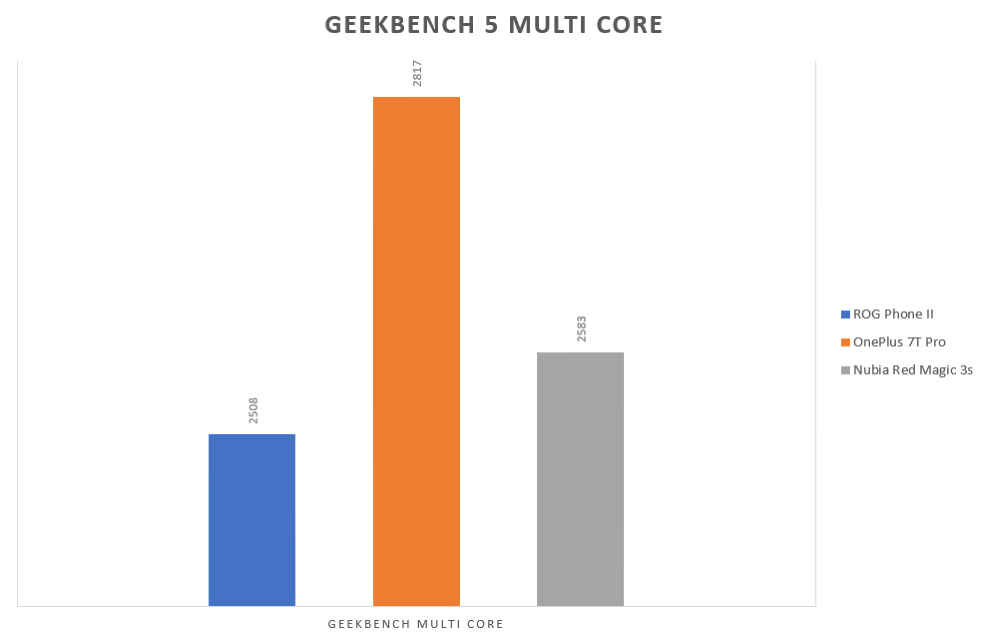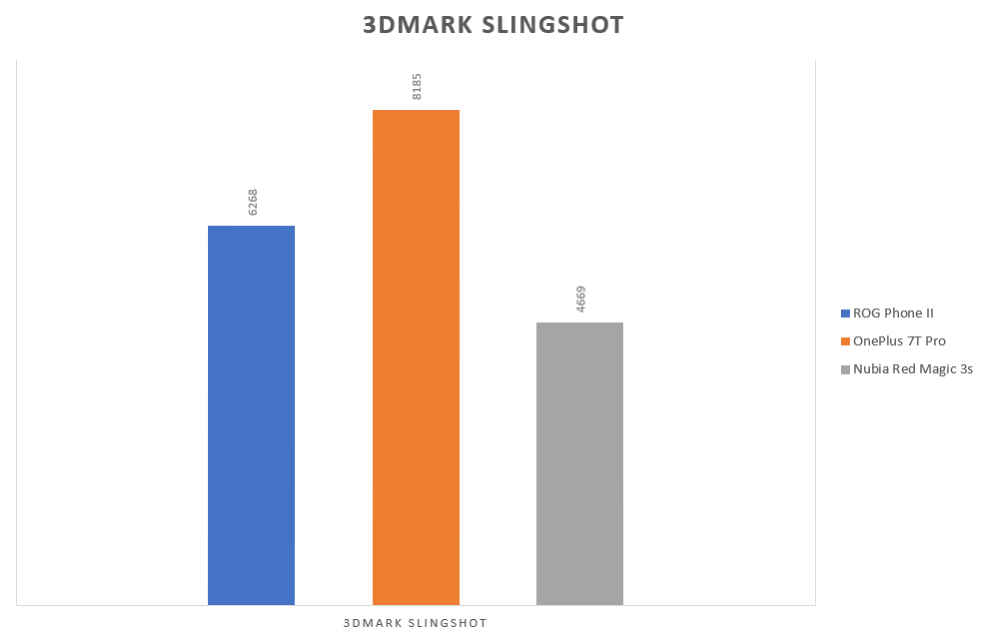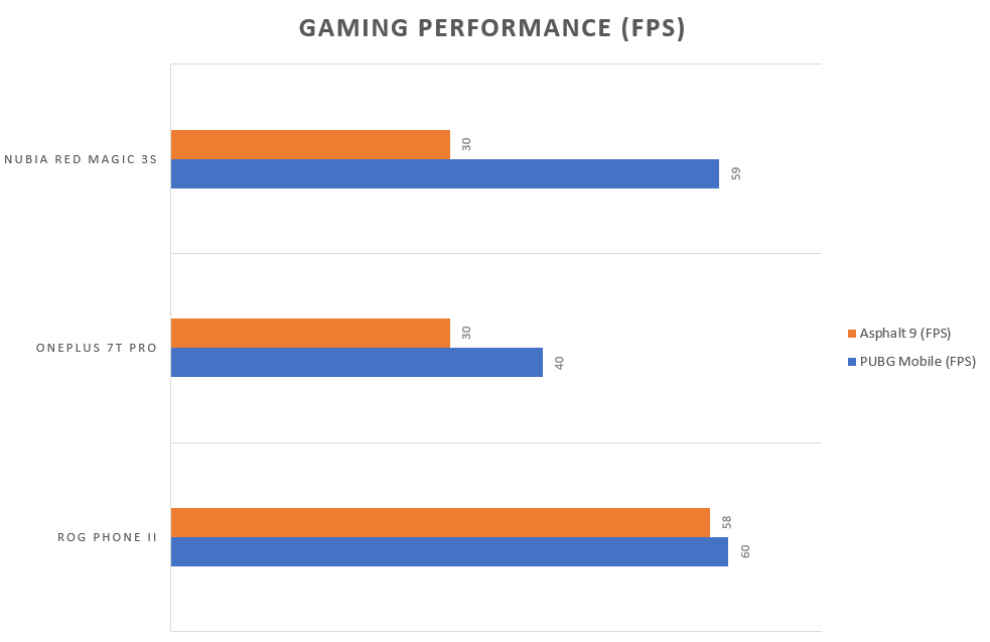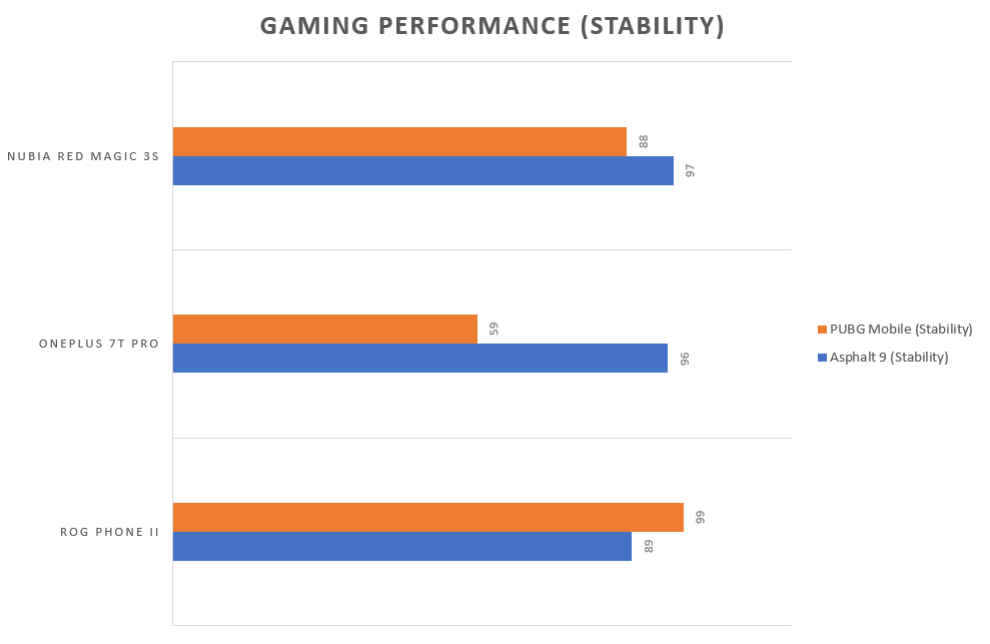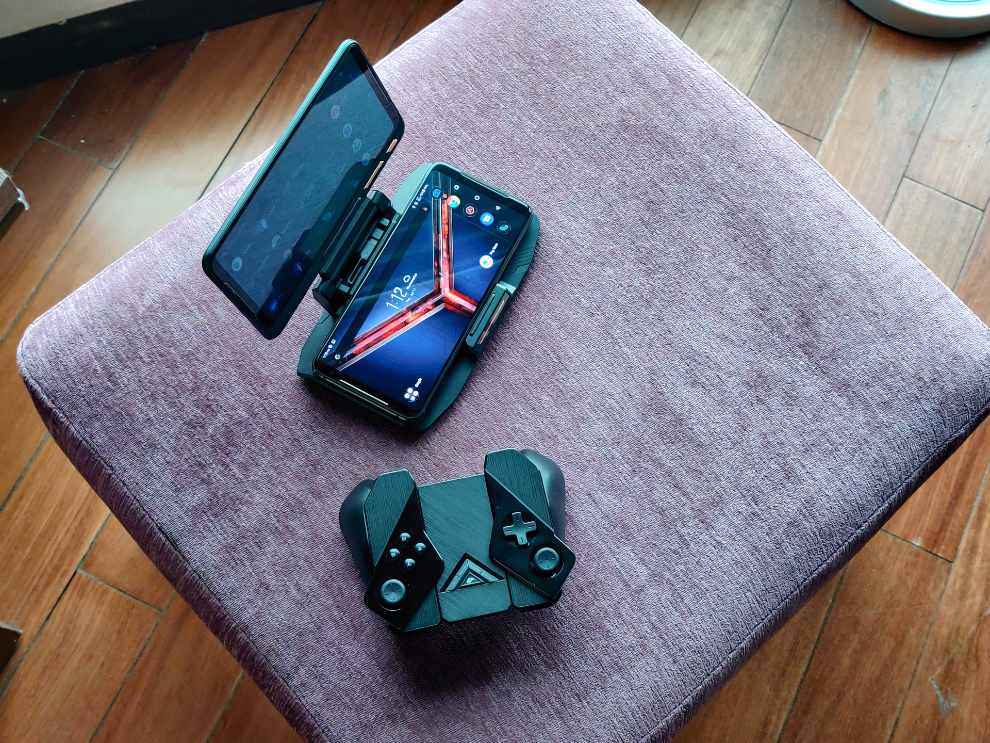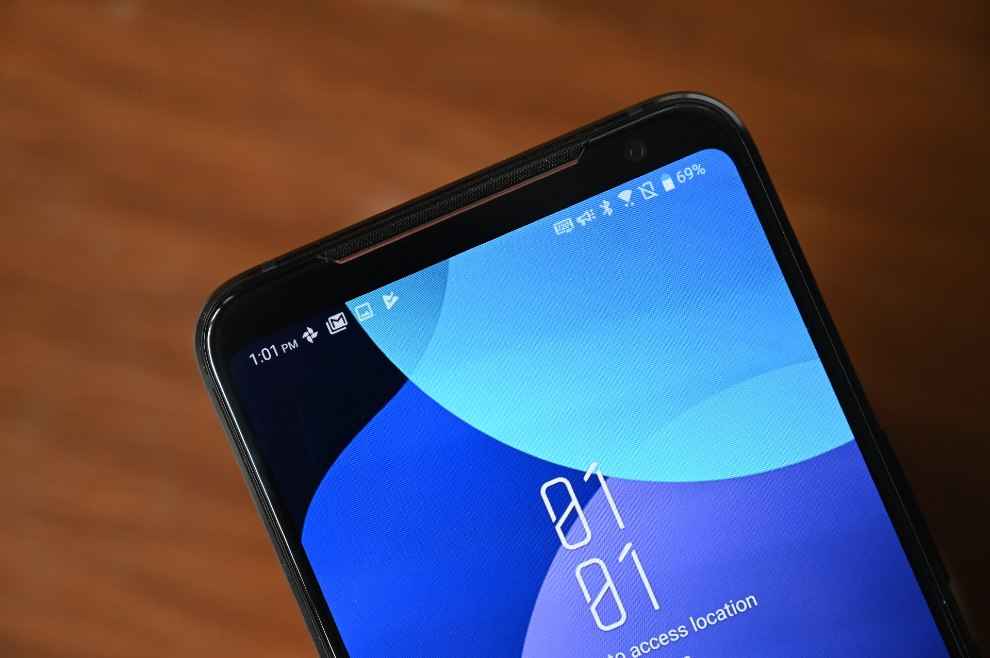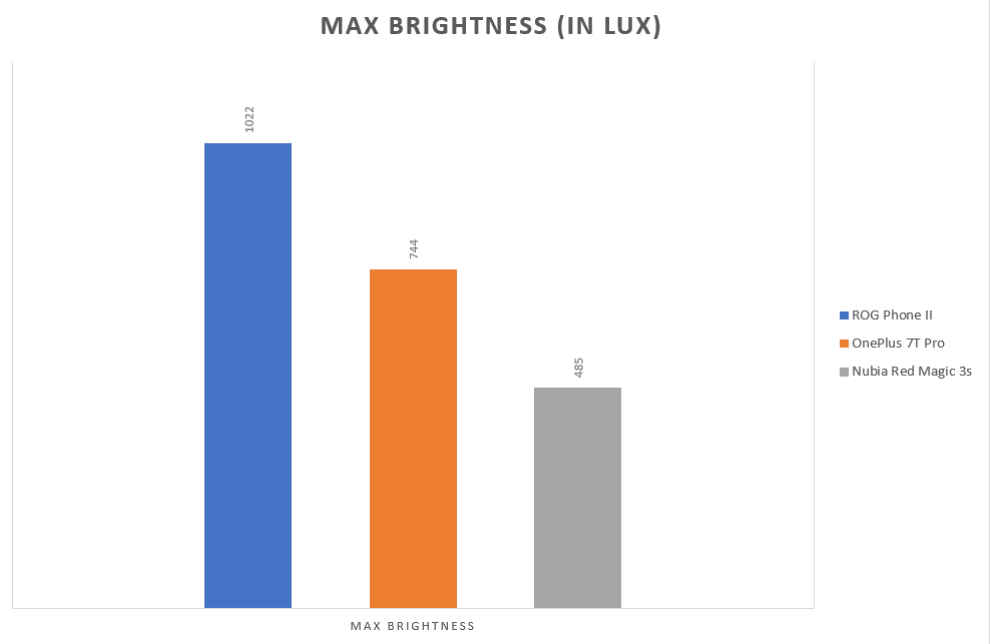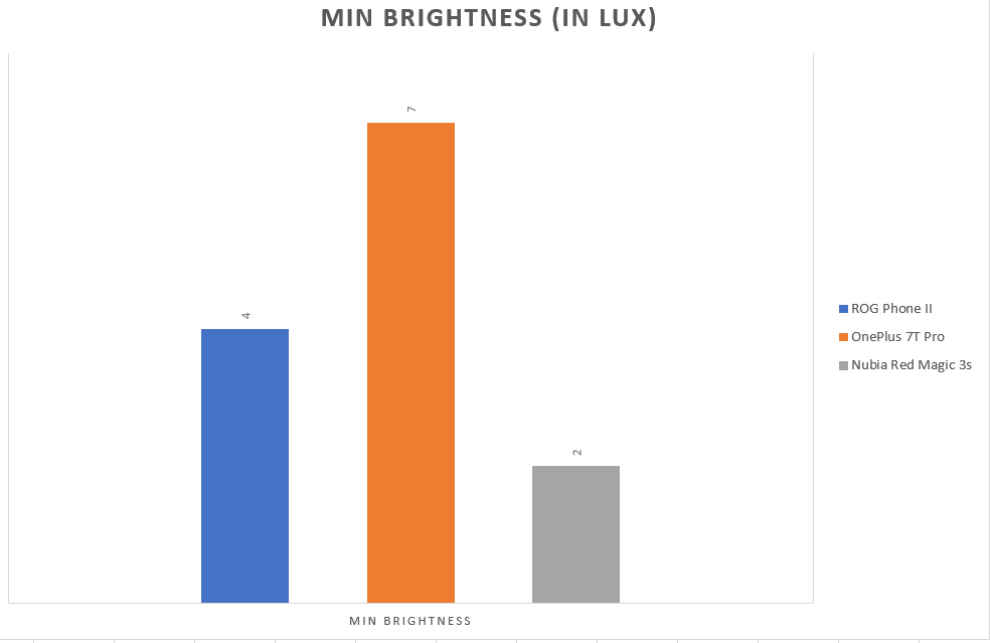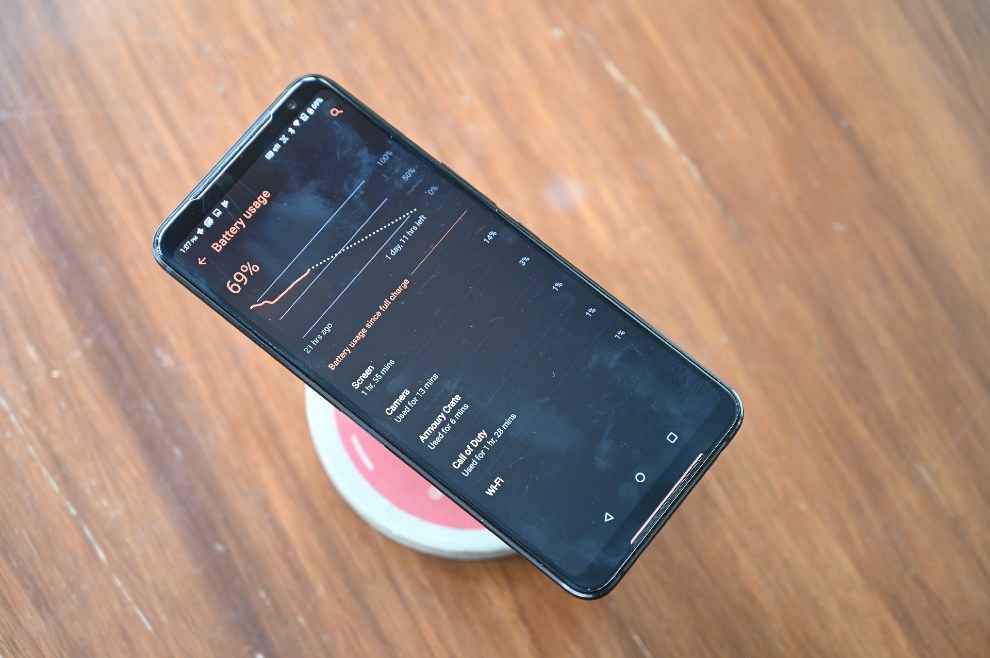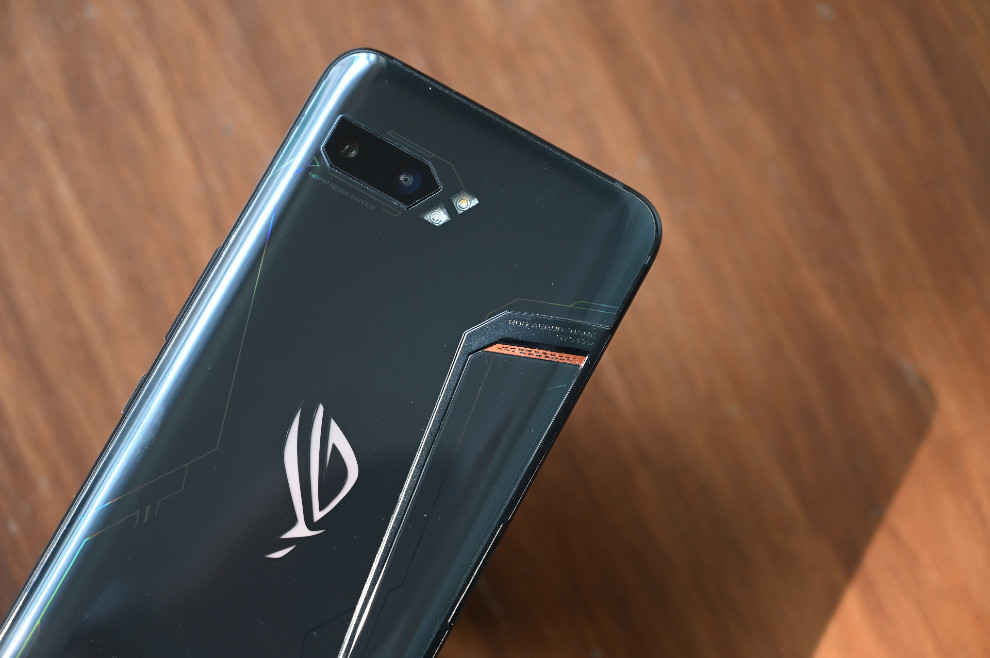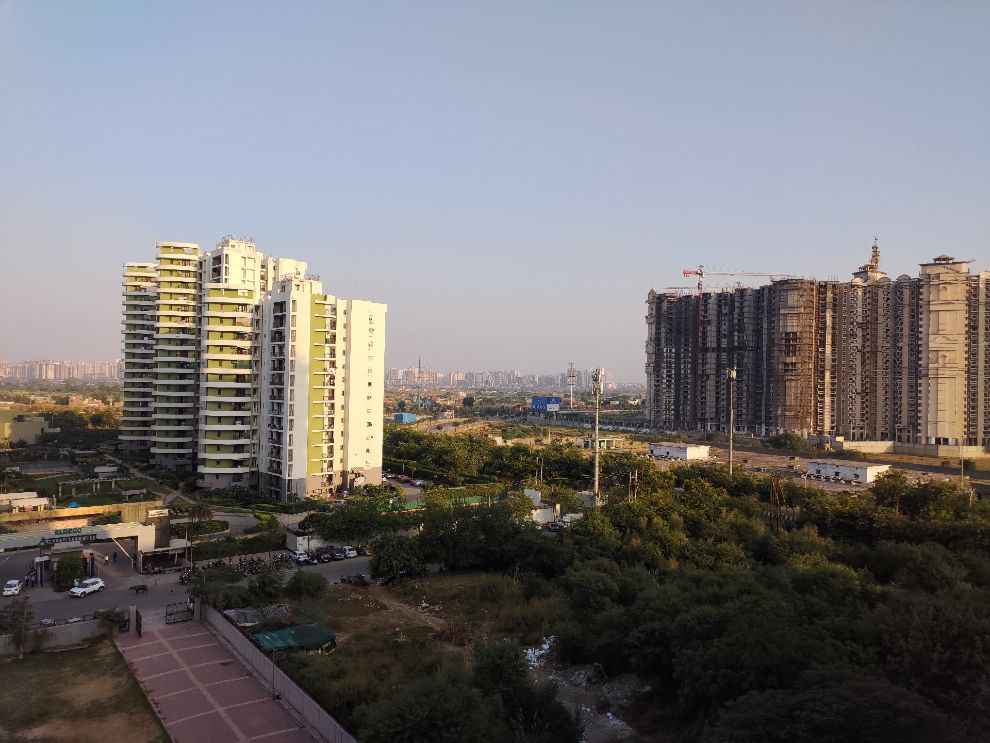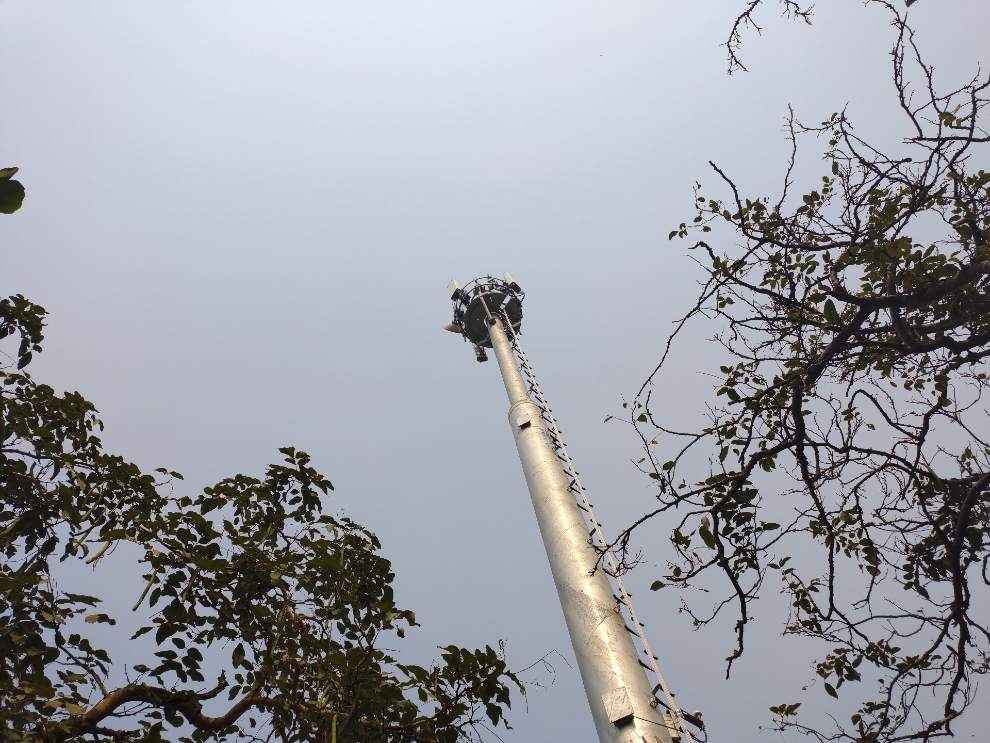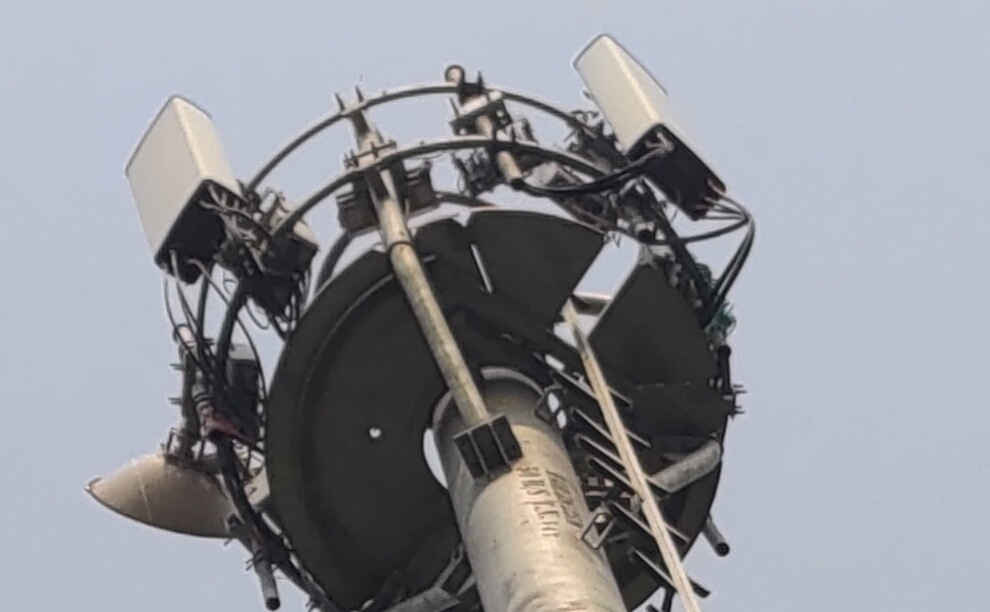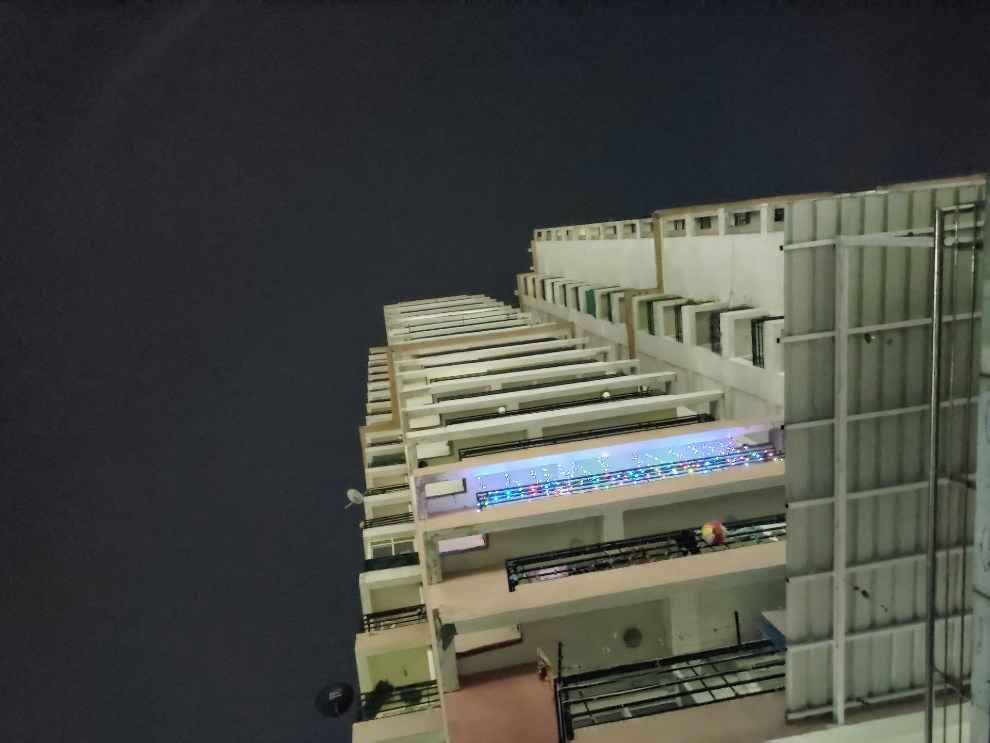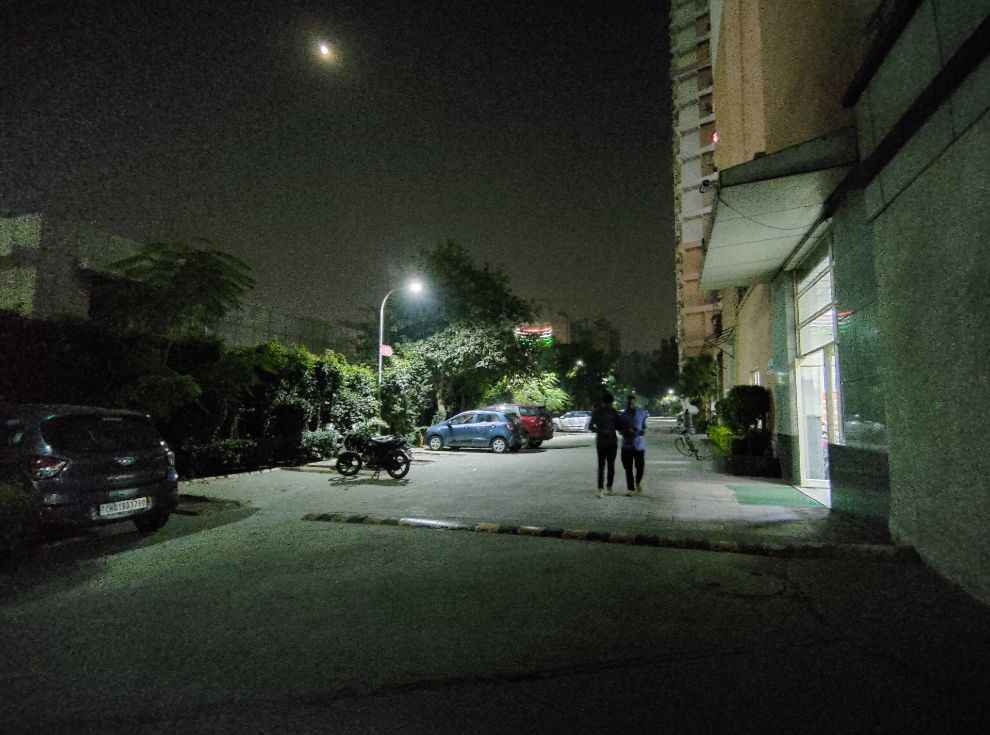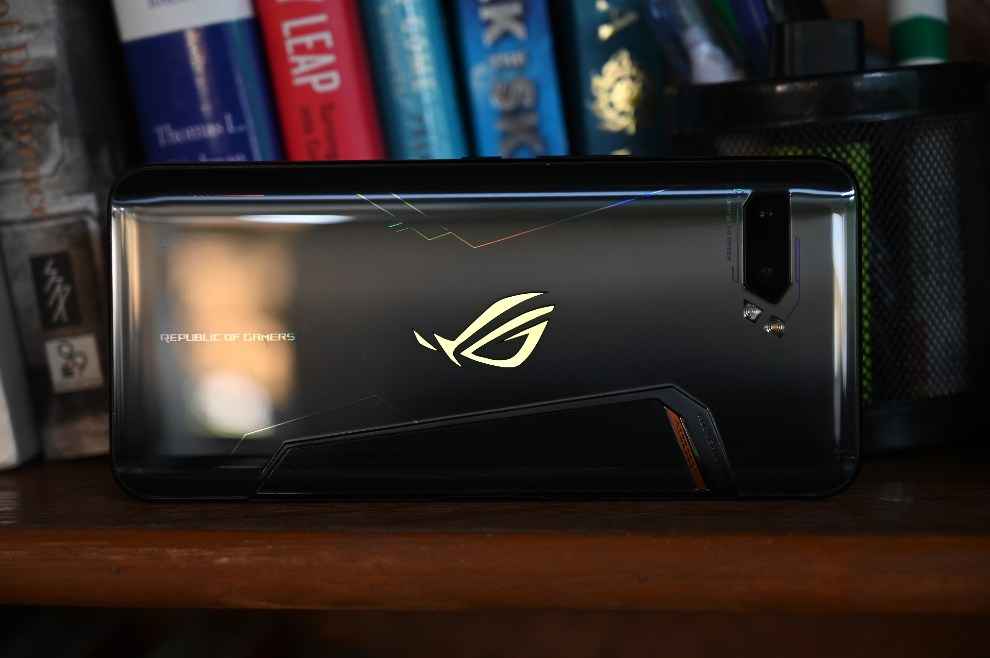Asus ROG Phone II Review : Gaming phone done right
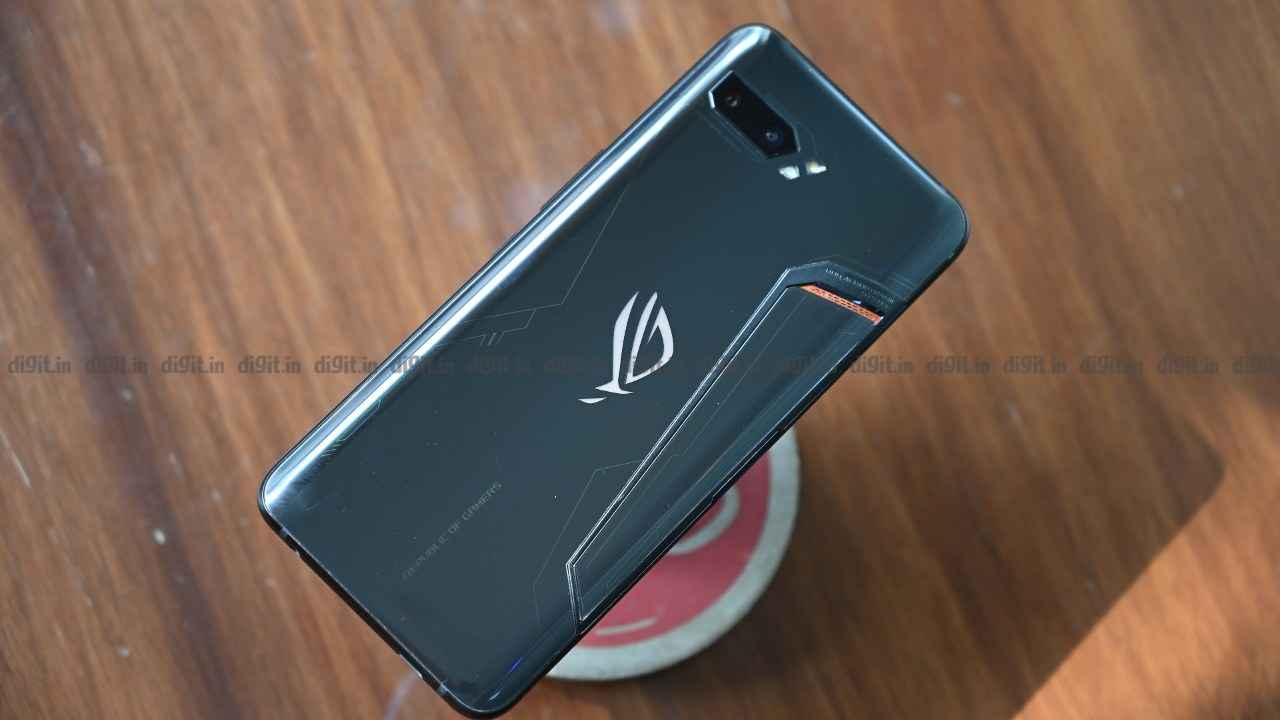
The ROG Phone II is the best gaming smartphone to own this year, if you are highly invested in the world of mobile gaming. The phone gives a lot of undue advantage to gamers, but to really make the best of this offering from Asus, you need to buy the accessories which will shoot up the costs. Long story short, the ROG Phone II is a mobile gaming console first, a flagship smartphone after.
What makes a phone a gaming phone? Is it a phone first and a handheld console later? Or do we look at it as a device for gaming first and then a phone? More than that, is it the hardware under the hood that makes a phone a gaming phone? If that’s the case, even the OnePlus 7T Pro can be called one. Then, why is ROG Phone II a gaming phone and not just another flagship? All these questions and then some, we answer in our review —
Performance
The Asus ROG Phone II calls itself a gaming phone. For a phone to be a gaming phone, the bare minimum is for it to offer the most powerful hardware there is. And Asus does just that. It packs the phone with the fastest processor available for Android phones — The Qualcomm Snapdragon 855+. In fact, it’s the first phone to use the SoC that Qualcomm made specially for gaming. Paired with up to 12GB RAM and UFS 3.0 storage up to 512GB (1TB globally). There are pressure-sensitive edges called Air Triggers and does exactly what you think. Inside, the phone is cooled by a vapour chamber cooling system and another fan-based Aero Active Cooler sold separately. Then there’s a side-mounted USB-C port for charging, headphone jack, front-facing speakers which are astonishingly loud, and a vivid 6.59-inch 10bit AMOLED panel with 120Hz refresh rate and 1ms response time and 49ms touch latency, all with Gorilla Glass 6 protection on top. Also, did we mention there’s a whopping 6,000mAh battery inside? Yeah, that.
If you have to evaluate the ROG Phone II as a gaming phone, this mouthful of features is the bare minimum to strike off. Then comes the performance.
It’s hands down the smoothest and fastest Android phone we have used so far. You thought the OnePlus 7T Pro was smooth? Wait till you use the ROG Phone II. More than the flagship gaming SoC, it’s the 120Hz display that makes the UI feel butter smooth. Swipe left or right, pull up the app drawer, pull down the notification tray, go to the Settings app, it doesn’t matter. It’s all done in an instant.
The ROG Phone II has an Armoury Crate app which houses all the games installed in your device. This is also where you go to max out the performance. You see a dashboard-like interface with the CPU, GPU, RAM and memory usage along with temperature readings for each. You can tap on X Mode to max out the CPU and GPU usage in-game, even though you will never really need it, but keep in mind that this does push the CPU and GPU temperature to go up to 45 degrees, but the surface temperature never breaches 40 degrees.
On benchmarks, the ROG Phone II is more or less at par with the competition. While it’s definitely higher than the Snapdragon 855-powered phones, it seems the ROG Phone II is relying on sheer firepower to blaze through tasks. The optimisations are better in phones like the OnePlus 7T and OnePlus 7T Pro which did beat this monstrous phone in some of the benchmarks. You can see how they compare in the charts below —
The benchmark results prove the ROG Phone II is just as good as a smartphone as any other, if not better. But how does it handle gaming you ask? A compact answer would be — Butter smooth with an extra dollop of firepower and an undue advantage in the form of the air triggers, without even considering the added accessories. But if I have to delve deeper, the ROG Phone II can handle any game at their highest graphics settings without dropping a sweat. GameBench numbers show the ROG Phone going all the way up to 58 FPS on Asphalt 9, the only Android phone to do so, with 89 percent stability. On PUBG Mobile, the game ran at 60 FPS with 99 percent stability.
With the top of the line hardware that the ROG Phone II rocks, it’s pretty much a given that the performance will be top-notch, be it gaming or anything else. But what sets the ROG Phone II really apart from the usual crop of phones is the special abilities you have. The Air Trigger II for one. The pressure-sensitive edges act as extra buttons which comes super handy in games like CoD Mobile where I mapped the right trigger to open the scope, and the left trigger to fire. It essentially made my thumbs free, so I could aim and shoot while strafing around. This is just what you get out of the box. Then comes the accessories.
Asus offers seven different accessories to enhance your gameplay. This includes a gamepad, a mobile desktop dock, a TwinView Dock, a cooler, and an armoured case. Out of them, the mobile desktop dock is the most over-the-top accessory. It actually let me play PUBG Mobile with other mobile players, but with a keyboard and a mouse. It’s easy to guess who won that round! Is it an undue advantage? Hell yeah. Is it cheating? Well, that’s debatable. Asus smartly emulates the keyboard and mouse as a gamepad, so you simply map the on-screen buttons to the keys and the mouse buttons. Now the ROG Phone II is pretty affordable for all that it offers, but if you get into buying the accessories, the overall cost will shoot up to as much as owning an entry-level gaming PC. To be honest, we fared just fine without them, but this is how Asus wants you to use the phone.
Display
The hardware is definitely what makes the ROG Phone II tick, but once you use the display of the phone, there’s no going back. It’s the first AMOLED display with 120Hz refresh rate. While there are no games that goes up to 120 FPS, everything sort of looks much smoother with display set to 120Hz. Most apps, however, will be locked to 60 FPS while some games like Vainglory, Minecraft, Dead Trigger 2 and the likes can go even higher, up to 90 FPS. Making things even better is the 1ms response time and the 240Hz touch latency. This helps the phone process touch input much faster than most other smartphones. So if you are in a duel and you and your opponent press the button at exactly the same time, you will be the winner.
The 6.59-inch panel is a 10-bit panel and supports HDR video playback. Having said that, Netflix, YouTube and games like PUBG Mobile supports HDR on the ROG Phone II. Asus also claims the ROG Phone II’s panel is the most colour accurate among all flagships launched with Delta E < 1. Now there was no way to test that claim without a colourimeter, but we will take Asus’ word for now. Photos and videos do look life-like on the phone’s massive display. We clocked the maximum brightness of the ROG Phone under direct sunlight at a whopping 1022 lux, which is far higher than all its peers, while the minimum brightness can fall down to 4 lux, which is once again quite decent and pleasing to the eyes at night.
Battery
Now the ROG Phone II is not the only phone to sport a Snapdragon 855+ or an HDR AMOLED display. It’s also not the only gaming phone. But it’s the only gaming flagship with a gigantic 6,000mAh battery. Yet, here’s the thing. Because of the extra hardware and the tendency of a gamer to run everything at the device's peak capabilities, there’s not a big boost in battery life. You still get a day’s worth of juice, if you game the whole time with every setting maxed out. It seems Asus didn’t have any other option but to install the highest capacity battery without hampering the battery life. Anything less would’ve marred the experience.
With 30 minutes of Netflix with HDR content, the battery drained by 5 percent while 15 minutes of PUBG Mobile at the highest graphics settings drained the battery by 4 percent. These are metrics we get in most flagship phones. A rough estimate of screen-on time with major time invested in gaming would be around 7-8 hours, speaking from using the phone for over a week as a dedicated gaming and entertainment device. However, if you use the device as a daily driver with not-so-heavy gaming, the ROG Phone II lasts well beyond two days. We did get a whopping 23 hours 45 minutes on PCMark Work 2.0 battery test.
Now another issue with having a massive battery is charging it to full capacity. Believe it or not, if you are using it as a daily driver and for heavy gaming, you will have to end up charging it by the evening if you take it off from power in the morning. But thankfully, the ROG Phone II comes with a 30W charger out of the box. On top of that, it supports USB PD 3.0 and QC 4.0, so any other brick supporting these standards will do the trick. It takes around 90 minutes to fully charge the phone.
Camera
The camera is where the ROG Phone II comes back to its smartphone roots. Like most high-end phones in 2019, the ROG Phone II rocks a 48MP dual camera. Asus has used the Sony IMX586 48MP sensor with a f/1.8 aperture lens along with a 13MP ultra-wide camera with f/2.4 aperture lens. On the front, you get a 24MP shooter for streaming and selfies. The primary camera is stabilised using gyroscope-based EIS but there’s no OIS. There’s a dedicated night mode that works with both the primary and ultra-wide lens and a pro mode that lets you control the camera parameters before shooting. There’s no RAW photo support, however. The camera app is the same as the Asus 6z.
Looking at the few photos we shot using the phone, the ROG Phone II is actually a decent shooter, despite being a phone made for gaming, stepping in as a good reminder that a gaming phone is still a phone that’s expected to do everything else just as well as it handles gaming. But this is not the phone for you if you also happen to be midly interested in photography. It gives you all the options yes, but they don't work all that well, as compared to phones like the OnePlus 7T. Iin fact, the Nubia Red Magic 3 with a single 48MP camera took far sharper photos.
The primary camera lacks the punchy colours even in the binned 12MP mode. The highlights tend to get washed out in some scenes while in others, they colours come out dull. The ultra-wide surprisingly has very little barrel distortion, but the photos themselves lack the sharpness or the details. The night mode on the other wasn't of much help in controlling the noise, as you can see in the samples below. In all, the camera on the ROG Phone II isn't the best. It just average.
Here are a few photos we shot with the ROG Phone II —
(Flickr link)
48MP
(Shot in 48MP, 1/1000 sec. f/1.79, ISO 25)
100 percent crop
(Shot in 48MP, f/1.8, 1/1733, ISO 26)
100 percent crop
12MP Binned
(Shot in 12MP, f/1.8, 1/278s, ISO 25)
(Shot in 12MP, 1/170s,f/1.8, ISO 25)
Ultra-wide
(Shot in 13MP ultra-wide, f/2.4, 1/1307s, ISO 33)
(Shot in 13MP, f/2.4, 1/530, ISO 25)
Night mode
Shot using Night Mode with primary lens (f1.8, 1/14s, ISO 2850)
Shot in Night Mode using ultra-wide lens (f/2.4, 1/8s, ISO 1600)
Build and Design
Cramming all that hardware and a gigantic battery means there will be a trade off in the design. It’d be difficult to achieve a bezel-less design with a pop-up camera and everything. And frankly, the ROG Phone II doesn’t even try to fit in. In fact, the ROG Phone II has thick bezels on the top and bottom, front firing speakers, a hefty hand feel and a polished glass back. The front fascia is reinforced with Gorilla Glass 6, while the rear glass panel has the ROG logo embedded in the middle, and a dual camera module on top, and slick grooves to highlight its gaming cred. Although nothing screams a gaming phone like the RGB-lit ROG logo which can be synced with other ROG products that you own.
A few gaming centric design features include the USB C port at the bottom slightly offset from the center, offering a better grip. There’s also an additional USB-C port on the side along with the connector with the accessories. The phone has front firing speakers which are hands down the loudest I have come across in a smartphone. Oh and did we mention Asus still found space to include a 3.5mm headphone jack?
But there are some downsides to using the phone as a daily driver. For one, you will need a large pocket to carry the phone around which is common if you are a male. But not quite for a female gamer. It’s also not water and dust resistant which means more careful handling and the glass panel at the back might not survive a drop considering the weight of the device.
Bottomline
This is a simple question to answer. If you’re seriously into gaming on a smartphone, this is the best you can get in India. The performance, features and the design will appeal to a hardcore gamer. If you’re a casual gamer, there’s no point in buying this and it’s better to stick to a OnePlus 7T or a Asus 6z for that matter which are smartphones first, gaming phones later. The ROG Phone II can be an excellent weapon in mobile gaming events and for game streaming. Otherwise, the ROG Phone II is just too much bent towards gaming for the average user to use as a daily driver. Asus intelligently priced the ROG Phone II much lower than the ROG Phone last year, and that should be lucrative enough for a hardcore gamer to consider this as a serious option.

